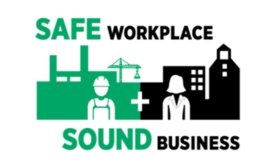Home » Keywords: » human factors
Items Tagged with 'human factors'
ARTICLES
Dr. Geller discusses the uses and misuses of behavior-based safety and why the psychology of safety is more important today than ever.
Read More
Rethinking Traditional Safety, Part 3
The third dimension of risk assessment
February 4, 2020
Digital Edition Exclusive
A Personal Story of Human Errors
Remember: You can’t change the human condition
October 2, 2019
On human performance & culture
Don’t focus on frailties; don’t mandate culture
October 1, 2019
It’s time for a New View of safety
Focus more on positive outcomes & systems, less on bureaucracy and human failure.
June 17, 2019
Big Pharma company takes on the “new view”
“We invented nothing ourselves but incorporated learnings”
June 13, 2019
NFPA 70E 2018 breaks new boundaries
Assessing risks, preventing errors, building a culture
August 3, 2018
Become a Leader in Safety Culture
Build your knowledge with ISHN, covering key safety, health and industrial hygiene news, products, and trends.
JOIN TODAYCopyright ©2024. All Rights Reserved BNP Media.
Design, CMS, Hosting & Web Development :: ePublishing










